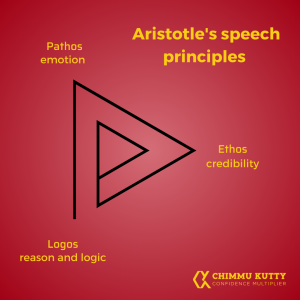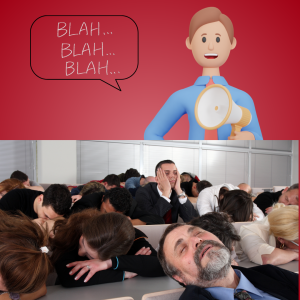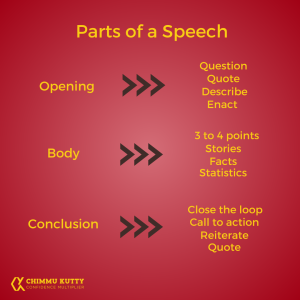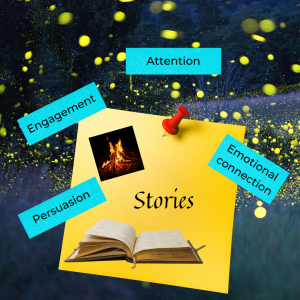
Overcoming the lethargy of inaction
April 1, 2023
From Setbacks to Success
March 21, 2024Unlocking the Secrets of a Great Speech

It’s a meeting with all the head honchos and you are asked to say a few words.
It’s your best friend’s birthday bash and everyone looks at you to pop out a funny speech.
As the person leading the unit, you are expected to motivate and inspire – every time there is a meeting.

You are sweating buckets. You have a vague idea of WHAT you want to say. But it is HOW you want to say it that is leaving you hanging.
Sounds familiar?
Here I will share a simple and effective way to put your speech together. Among the many skills you learn as a Toastmaster, structuring a speech is one of them!
Topics covered in this blog
- Aristotle’s formula
- Distil your message
- Parts of a speech
- The Opening
- How NOT to start a speech
- The Body
- How many points?
- The conclusion
- What if my speech is a report?
- What if it is a social occasion speech?
- What if my speech is to motivate my team/employees?
- The power of a story
- Where to find stories?
- Whose stories? Here comes the little black book
- Elements of a great speech
- Conclusion
Aristotle’s formula
Tell them what you are going to tell them, tell them, then tell them what you told them. – Aristotle

It was true in Aristotle’s time and it is true now too!
Brevity is king. A few points to keep in mind before we start putting our speech together.
- Be concise and precise, avoid rambling
- Be conscious of the use of words – try to choose impactful ones to make your points
- Visual aids, like slides or charts, should be a complement to your speech, not a replacement. Be thoughtful in the use of these.
- Try to add humour
- Practice in advance so you are familiar with the flow and the points
- Practice the pauses too!
Aristotle also taught us to use logos, ethos, and pathos to persuade the audience.

Logos – appeals to reason and logic. It involves using evidence, facts, and logical arguments to persuade the audience.
Ethos – uses the credibility of the speaker to convince the audience. It involves establishing the expertise, character, and reputation of the speaker as a trustworthy source. This is THE reason why your speaker introduction is so important. It is setting you up as an authority in the minds of the audience and getting them ready to listen and accept what you are going to say.
Pathos – uses emotional persuasion to sway an audience like fear, anger, or empathy. Here is where storytelling comes into its own.
Distill your message
Let’s begin with the end in mind.
When I started out in Toastmasters, my mentor had me write out a single sentence summarizing my speech. This forced me to focus on the message that I wanted to leave the audience with.
If you are not able to do this concisely, you need to rethink the object of your speech.

Parts of a speech
A good speech is just not a string of sentences randomly put together. It is a wonderful jigsaw where every speech usually has the following 3 parts
- An opening
- The body of the speech
- And the conclusion
Each part is vital to the success of your speech. Each part has its own characteristics.
Let’s look at these parts in detail.
The Opening
This is the part where you start the speech. What you say here and how you speak will help catch the audience’s attention.
Here are a few ways you could use to hook audience attention from the first word out of your mouth.
- Ask the audience a question: This immediately gets your audience to think and connect with what you say.
- Start with a quote: I like this one as I feel this influences the audience subtly to think like you want them to.
- Do some gestures or ‘acting’ instead of words: I saw a reputed speaker start with a small mono-act without a word being spoken. It was so powerful and had the audience enthralled.
- Start with describing a suspenseful scene: Thunder boomed as the rain fell in torrents. I shivered in fear as flashes of lightning lit up the trees on either side. I’m immediately transported into the scene and can feel the emotions described.
The purpose of the opening is to let the audience know clearly what your speech is about. Share the problem statement or set the stage for your point of view.
For eg. Let’s say you want to convince the audience that a 4-day workweek is ideal and productive. You inform this to the audience in your opening. Now they are eager to hear why and how a 4-day week will help them be more productive.
You have just told them what you are going to tell them.
How NOT to start a speech
Sample 1 – Good Morning everyone! Thanks for that amazing introduction. I’m honoured to be invited to speak today. Special thanks to David and Manju for asking me to be a part of this event. What a wonderful day to meet! Blah blah blah.
Sample 2 – Hello everyone. Myself Sunil. I’m a businessman with over 15 years of experience in the logistics industry. Blah blah blah blah blah blah blah blah blah.

I’m assuming there will be an MC for the event who will introduce you. So don’t waste time with unnecessary chitchat. This is not your Oscar speech. Get right into it. Otherwise, you will lose the attention of the audience.
In case it is an informal event, you will already be a known figure. There will not be any need to introduce you. Again, get right into the speech.
The Body of the Speech
The body of the speech essentially elaborates on the statement you made in the opening.
Let’s take the example of the 4-day workweek.
You can present up to 3 compelling reasons why a 4-day workweek is a must.
Each point can be substantiated with a story, facts, statistics, videos, and props. You name it, you can use your imagination to drive home the point.
How many points are ideal in a speech?
It depends on the length of the speech. Ideally, an audience can remember only 3 or 4 points. However, if you are sharing a lot of tips and techniques, consider giving these in the form of a handout after the speech. This way the audience will have your valuable contact and info.
The body of the speech is where you tell them what you said you were going to tell them.
The Conclusion
If done right, the conclusion can leave a lasting impact on the minds of the audience. They will actually remember what you were trying to tell them long after your speech has ended!
Here’s how to create a strong conclusion.
- Close the loop – if you had started a story in the opening, close it here.
- Have a call to action – What do you want the audience to do after listening to you?
- Quote – consider using an impactful quote as the last sentence of your speech
- Reiterate – reiterate (a fancy word for repeat) the points in your speech substantiating your opening statement.
Eg. The audience must be convinced that the only way forward is having a 4-day workweek.
In other words, tell them what you told them.

What if my speech is a story?
Wonderful! A story naturally has an opening, body, and conclusion. But let’s consider a twist. Look at how the trailer of movies and series are made. They start with the cliffhanger.
You can start your story with the cliffhanger. Your audience is hooked from the beginning!

Cliffhanger: a dramatic and exciting ending to an episode of a serial, leaving the audience in suspense and anxious not to miss the next episode.
What if my speech is a report?
A report has a message to convey. Reports can be made interesting by using stories, visuals, and statistics.
Eg. Did you know that women comprise only 30% of senior leadership?
This can be shown easily as an impactful visual.

We all love visuals. They are much more interesting than boring facts and figures. Try to find ways to include as many visuals as possible. This way, when you do quote a figure, the audience can immediately relate by looking at the visual.
What if it is a social occasion speech?
It is your close friend’s engagement party and you are expected to say a few words. Here is where your knowledge of your friend, the history you have together, and the jokes which you shared come into play.
Of course, you must carefully put the speech together and practice so that it sounds effortless. The jokes and stories must also be chosen so that it does not hurt or offend anyone.
As you might have guessed, there is a lot of effort and thought which goes into giving these types of speeches.
What if my speech is to motivate my team/employees?
Build your speech around your one-sentence summary. Your intention should be to inspire the team to achieve their goals. This will help you choose the right stories, facts, and fun figures to motivate your team. And be sure to include personal anecdotes and examples. Nothing inspires like a personal story!
The power of a story
Those who tell the stories rule the world. – Anonymous
In today’s world of PowerPoint presentations and online meetings, we have a very short attention span. The one thing guaranteed to hold the attention of the audience is a story. Humans love stories. We have been listening to stories from bygone generations, where the only way to transfer knowledge was by word of mouth.

Using a story to drive home a point can be a powerful persuasion tool and helps increase attention, emotional connection, and engagement.

Where to find stories?
Stories are all around us. Learn to be an observer of life and every incident can become grist for the mill.
Stuff that happened in your life can become the base of a story. Stories can be found online, offline, in books, in the news, from people, incidents, dreams, fantasy, series, and cinema, to name a few.
Fun exercise: Check out the visual prompts at the end of this blog and challenge yourself to build stories around the pictures.
[The proverb “all is grist for the mill” means “everything can be made useful, or be a source of profit.
A miller ground whatever grain was brought to him, and charged a portion of the final product for the service. Therefore, all grain arriving at the mill represented income, regardless of its quality.
The first recorded usage was in the 16th century, but the term is probably much older.
The term “gristmill” was once common in the United States and Britain to describe a small mill open to all comers.]
Source: Wikipedia

Whose stories? Here comes the little black book
But what if you don’t have any juicy stories to share? What if you feel your life has been very ordinary?
Here’s a hack that works for me. I use others’ stories!
I borrowed a story from a friend who was present during the tsunami which hit Chennai. I used my relative’s story of life in the village when she was a little girl. A WhatsApp forward spoke of an interesting dialogue between a monk and his disciple.

All these stories get collected into what I call ‘The Little Black Book’. I jot down interesting thoughts which can be turned into stories. I collect incidents and memories from everywhere.
Whenever I need a suitable story for my speech, I dip into my little Black Book. Voila! My own curated collection of stories!
Elements of a great speech
A great speech is like a necklace which has many pearls strung to it. An attention-grabbing opening that tells the audience what they are about to hear. The body of the speech filled with interesting stories, facts, and fun, substantiating the opening statement. And a strong conclusion that leaves an impact in the minds of the audience.

Although it seems like there are many moving parts to this speech, it is a beautiful work of art as a whole.
Conclusion
Anyone can deliver a speech. But taking the audience along with you on the journey is a skill and an art.
By deconstructing the speech into its components of opening, body, and conclusion, you can string them together to form a masterpiece.
All you need to do is follow the techniques detailed in this blog!
Happy speech writing and delivering!
PS: do you have an important speech coming up and are looking for help to put that speech together? Speech writing and delivery is a service that I offer. To know more, please do email me at confidence.multiplier@chimmukutty.com.
Fun exercise: Here are some visual prompts. Challenge yourself to build stories around the pictures using the tips in this blog.

Pics courtesy: Canva
Book recommendation:
If you are looking to improve your skills in public speaking and communication, then “Talk Like Ted” is a valuable read.

Looking forward to your comments and feedback on this blog at confidence.multiplier@chimmukutty.com.



